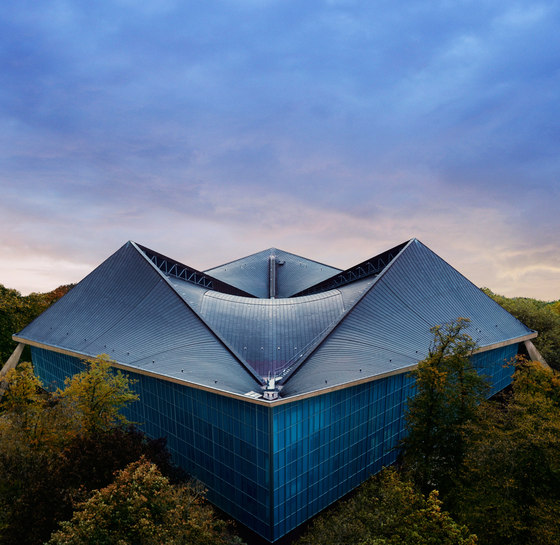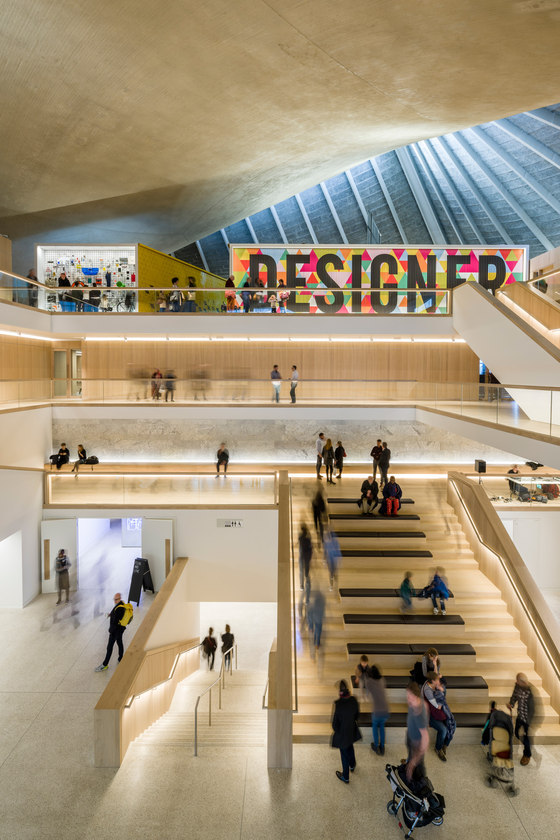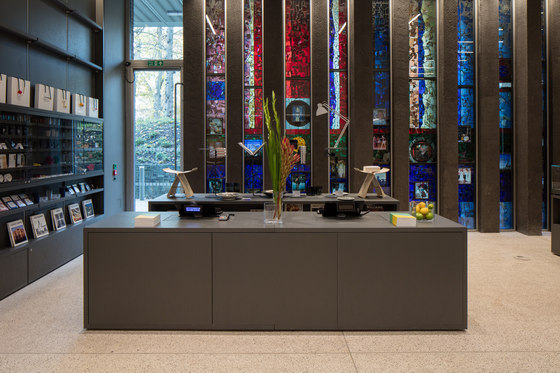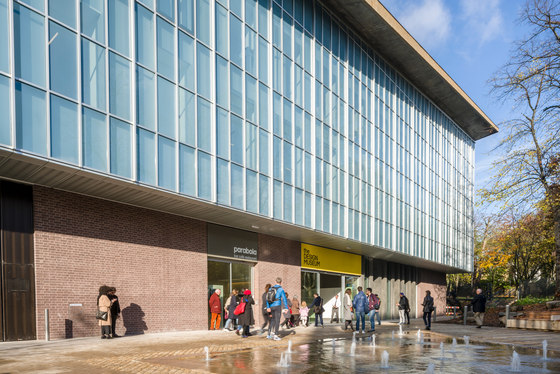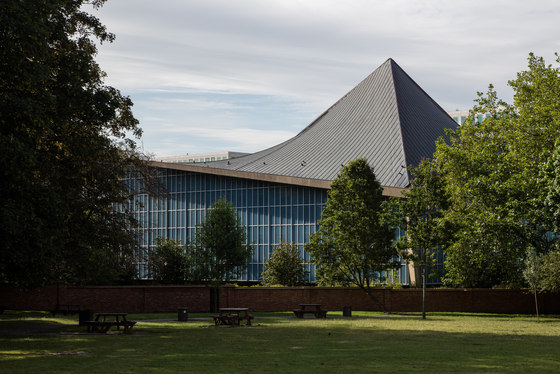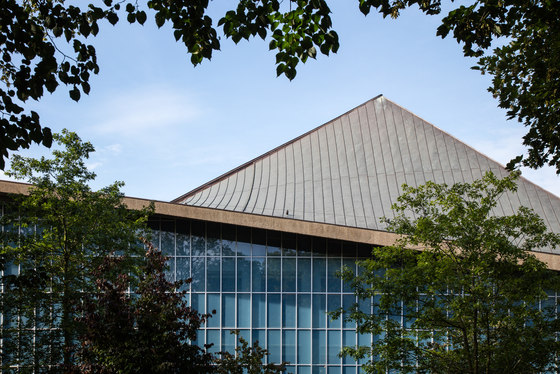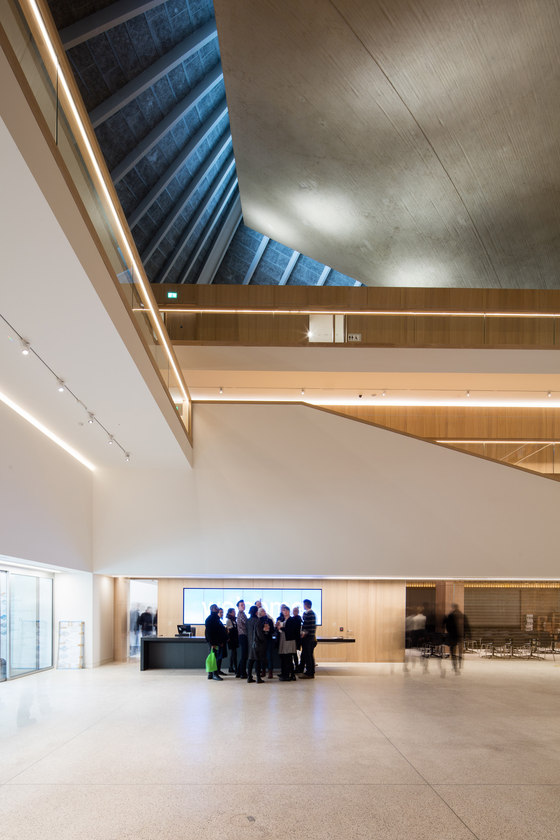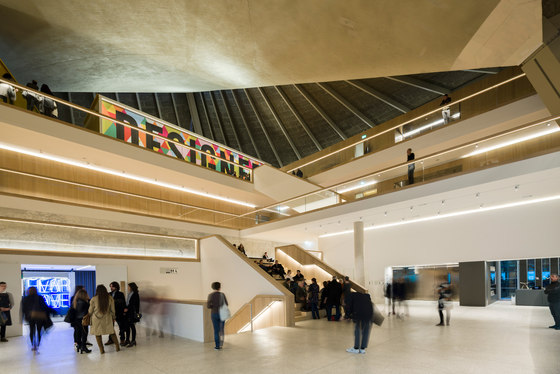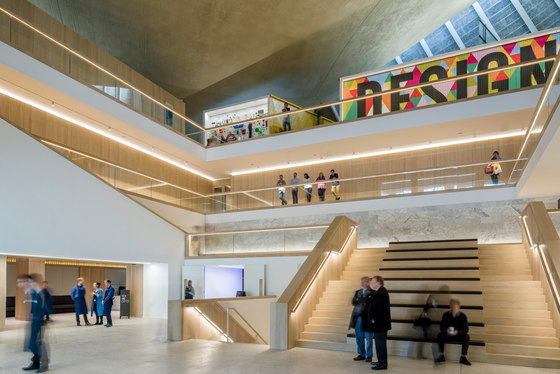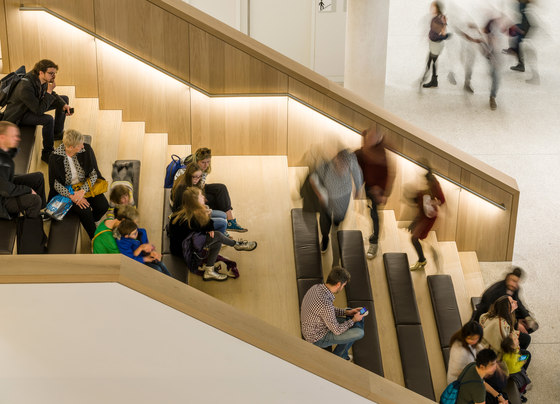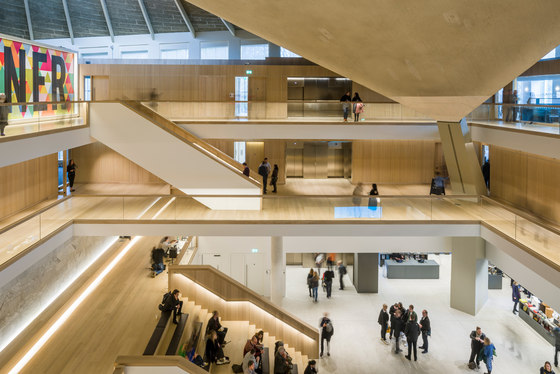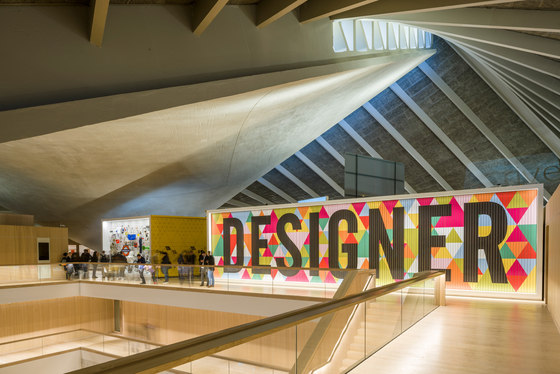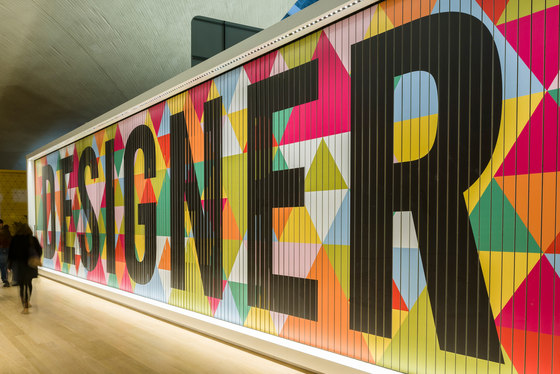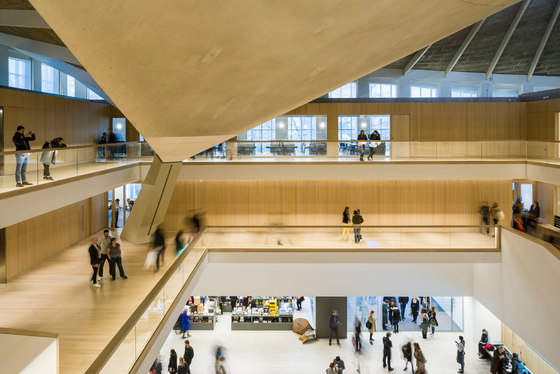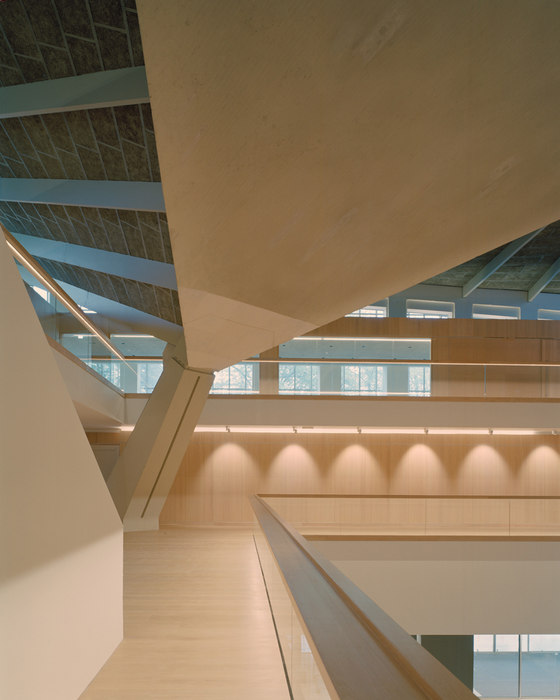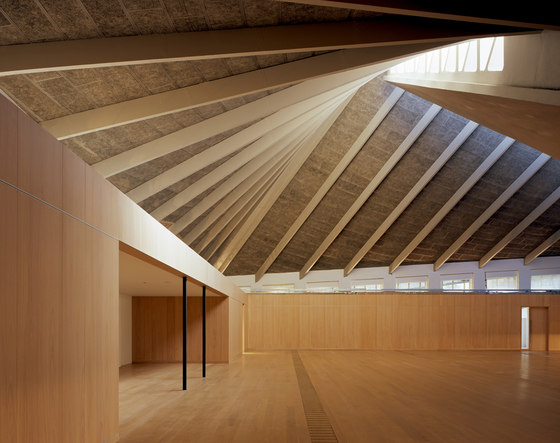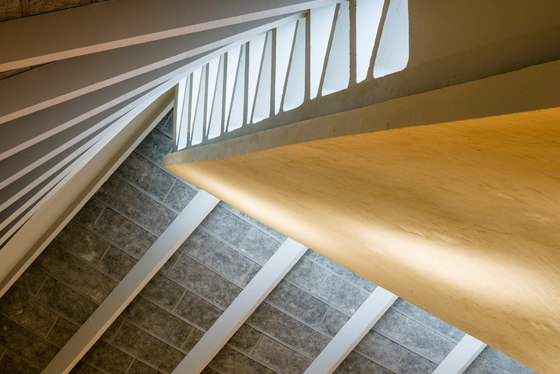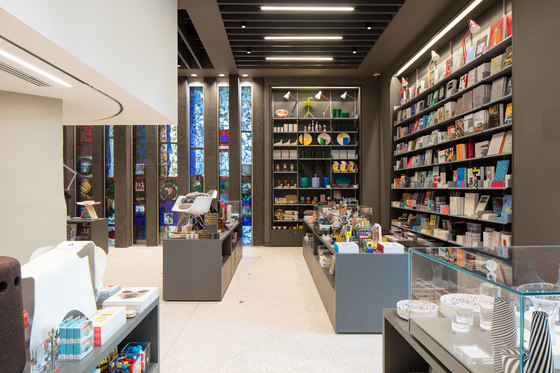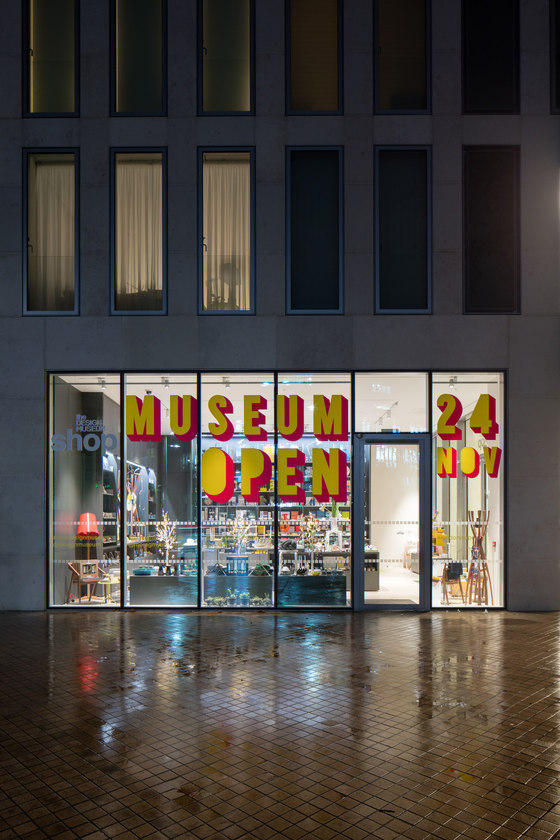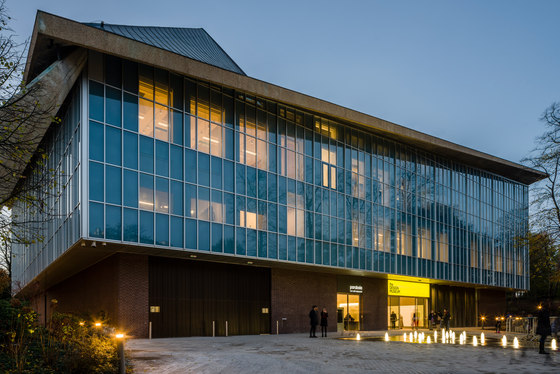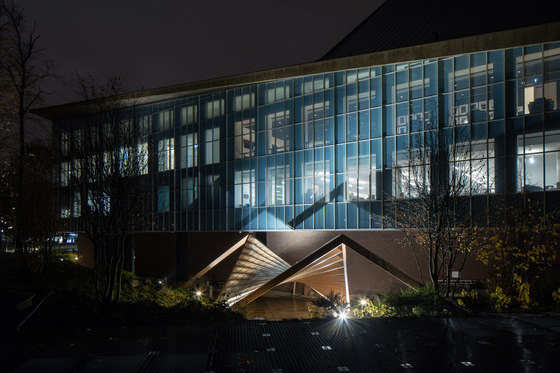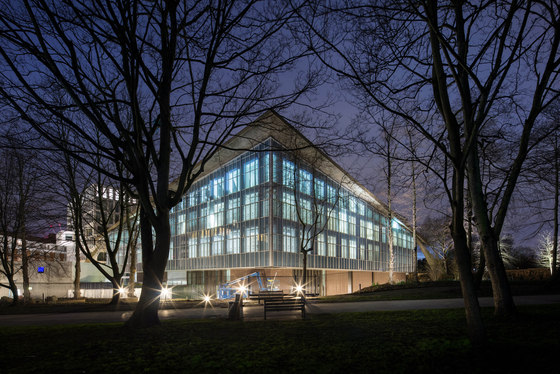On 24 November 2016, the Design Museum opened in its new home on Kensington High Street, west London. Housed in a landmark grade II* listed modernist building from the 1960s that has been sensitively retuned by John Pawson, the project is the culmination of a five-year construction process.
The museum has now tripled to 10,000 sqm from its previous premise in Shad Thames, south-east London. Following an investment of £83m, the structure has been transformed for its future role as the world’s leading institution dedicated to contemporary design and architecture.
OMA, Allies and Morrison and Arup have restored the building’s spectacular concrete roof and distinctive facade. Remodeling the interior, John Pawson has created a series of calm, atmospheric spaces ordered around an oak-lined atrium, incorporating key elements from the original structure. The project has seen some of the world’s leading designers, manufacturers and patrons come together to create a new global hub for contemporary design.
With architectural and structural expertise from OMA, Allies and Morrison and Arup, a permanent collection display designed by Studio Myerscough, a restaurant and members’ room by Universal Design Studio, a Centre for Learning made possible by the Swarovski Foundation, flooring by Dinesen, furniture by Vitra, shelving by Vitsoe, lighting by Concord, a visual identity by Studio Fernando Gutierrez and way-finding by Cartlidge Levene, the new Design Museum is an outstanding example of interdisciplinary collaboration.
Founded by Sir Terence Conran, the Design Museum opened in 1989 in a former banana ripening warehouse on Shad Thames, following its successful original incarnation opening in 1983 as the Boilerhouse Project, in the basement of the V&A. Remaining at Shad Thames until 30 June 2016, the Design Museum mounted a host of critically acclaimed exhibitions, including shows dedicated to the work of Lord Richard Rogers, Thomas Heatherwick, Dame Zaha Hadid, Dieter Rams, Ettore Sottsass, Sir Paul Smith, Christian Louboutin and Sir Kenneth Grange.
Starting on site in 2012, the Design Museum is the first major public work of John Pawson - a designer famed for his ability to create simple yet sensuously rich spaces and for his refined use of materials. Pawson’s previous projects include an apartment building in New York for Ian Schrager, the new Cistercian Monastery of Novy Dvur in the Czech Republic, the Sackler Crossing in Kew Gardens and Christopher Kane's first store in London. The museum sits on Kensington High Street next to the southern entrance to Holland Park and forms the heart of the new Holland Green residential development.
In 2010 a partnership formed by Chelsfield and the Ilchester Estate to redevelop the site was granted planning permission by the Royal Borough of Kensington and Chelsea for the construction of three residential building and the refurbishment of the Grade II* listed building located at the centre of the site. Following the terms of a Section 106 agreement that formed part of the planning permission, the Design Museum was granted a 175-year lease of the listed building at a peppercorn rent.
The complex renovation of the museum saw OMA led by Reinier de Graaf, Allies and Morrison, Arup and John Pawson work together to bring this landmark of post-war British architecture back into use. Using radical engineering techniques, the original concrete floors were removed – a process that entailed propping the roof on a temporary steel structure 20 metres above the ground. The original façade has been replaced with a double glazed skin, significantly improving insulation standards and allowing daylight into the interior.
The new exterior has been meticulously detailed to resemble the original blue skin of the building, with matching mullions and a fritted pattern of printed dots. A new public plaza complete with fountains has been installed at the entrance to the museum, within a landscape designed by West 8.
Inside the museum, visitors find themselves in a central atrium with striking views up to the iconic hyperbolic paraboloid roof. The stunning concrete roof spans the length of the building, rising on the two opposing corners to create a manta ray-like structure above. Galleries, learning spaces, café, events space and a shop are arranged like an opencast mine around the main atrium, allowing visitors to navigate the space with ease and to discover everything the building has to offer by simply walking up its oak staircases.
The building has two generously proportioned temporary galleries, one on the ground floor, the other on the museum’s lower level. Both featuring double-height spaces and textured concrete columns, these galleries will display up to seven temporary exhibitions per year, priced between £10 and £18. The double-height basement also features a dedicated museum collection store with a glass window, allowing visitors a behind-the-scenes glimpse of pieces not on display. The 200-seat Bakala Auditorium completes the basement and allows the museum to expand its public programme and evening talks.
The ground floor houses the Design Museum’s coffee and juice counter, catered by Prescott & Conran, seating up to 40 people and serving brunch and snacks. Located opposite is the Design Museum Shop, featuring Vitsoe shelving units and the building’s original stained glass windows by Keith New. Stock includes exhibition merchandise, a world-class selection of international magazines, exclusive designer collaborations and specialist art and design books in collaboration with Phaidon.
The oak staircases form the circulatory heart of Pawson's design. Strip LEDs line the handrails and banisters, adding theatre to the experience of moving round the building, as visitors follow the light towards the top floor and the soaring underside of the roof. Bench-style leather seating across a section of the main staircase provides a comfortable place for visitors to pause and take in their surroundings.
Italian terrazzo flooring is used throughout the basement and ground floors, transitioning to warm-toned Dinesen oak flooring and wall panels on the upper floors. A key element of the Pawson vocabulary, a wooden bench with concealed lighting spans one side of the Weston Mezzanine. The bench sits in front of a series of marble panels conserved from the original building, which before that had previously been installed in the Imperial Institute in1857. The Weston Mezzanine is supported by the Garfield Weston Foundation.
John Pawson commented: ‘There are ‘moments’ in the building that I relish every time I walk around, but I think it is really the way everything comes together – the new and the old – that gives me the greatest pleasure. I hope the Design Museum shows people that you don’t have to tear down and start from scratch to make exciting new cultural spaces.’
Wayfinding by Cartlidge Levene guides people through the building and utilises pictograms designed for the 1972 Munich Olympics by the celebrated German graphic designer Otl Aicher.
On the first floor visitors will find new spaces dedicated to learning, enabling the museum to educate future generations about the value of design. The Sackler Library and Archive features a collection of books and drawings in handsome oak bookcases that incorporate purpose-designed seating. Located adjacent to the library is the Il Cerchio di Giotto film studio and the Johnston Nijman Meeting Room. The main feature of the first floor is the new Swarovski Foundation Centre for Learning, with hands-on workshops, as well as digital learning studios and the Design Studio. The new learning facilities expect to see 60,000 learners pass through their doors every year.
Nadja Swarovski, Chairperson of the Swarovski Foundation, commented: “We are thrilled to be part of the Design Museum’s new home and new vision. The Swarovski Foundation Centre for Learning is the embodiment of the Foundation’s commitment to fostering culture and creativity, and John Pawson’s stunning design is the perfect backdrop for a design-led education program that will nurture the next generation of talent.”
Displayed on the first floor is a selection of photography by fashion photographer Koto Bolofo. The images show the building in its construction phrase and present a fond view of the building’s original curves and silhouettes.
The main attraction on the museum's top floor is the new permanent collection display, Designer Maker User. For the first time in the museum's history, this exhibition will be free to visit. It will display almost 1000 objects, viewed from the perspectives of designer, manufacturer and user, as well as a crowd-sourced wall.
Generously supported by the Heritage Lottery Fund (HLF), a grant of £4.9m has made a substantial contribution towards the construction of the new building and the realisation of this permanent display. Standout pieces include a 1:1 scale model of the new London tube train, the British road signage system, an AK47 and an interactive digital fashion display.
The top floor of the building offers views down to the ground floor and a chance for visitors to come within touching distance of the roof. Parabola, a new restaurant named after the museum’s signature roof, sits on the top floor of the museum and offers unprecedented views of Holland Park. Also catered by Prescott & Conran - the team behind Boundary and Albion - the restaurant will function as a relaxed café during the day and be transformed in the evening by a rolling programme of guest chefs.
Parabola will be open until 11pm Monday to Wednesday, 11:30pm Thursday to Saturday and 6pm on Sundays. Designed by Universal Design Studio, the space features customised archive furniture by Vitra and Artek, a sculptural polished pewter bar by Benchmark and lights by Flos. Materials, textures and colours reference the neighbouring park and create a connection between interior and exterior.
Located in the opposite corner and also catered by Prescott & Conran is the Design Museum Members’ Room. Designed by Universal Design Studio and with views over the park, the space represents a dedicated area where members can relax, work and eat. Yearly membership at the Design Museum costs £75 and offers free access plus one friend to all exhibitions, priority booking for events and unlimited access to the Members’ Room. Student memberships are set at a reduced rate of £45.
The Helene and Johannes Huth Gallery on the top floor offers further options for public programming, pop-up exhibitions and corporate hire. The gallery sits next to a set of new studios for young designer to take up up residencies in the museum. With the support of Arts Council England, four emerging designers are selected by the museum each year for its Designers in Residence scheme. Responding to an open call and brief, the designers receive a bursary and advice from the museum’s curatorial, communications and development teams, to create a body of work for public display.
Sir Terence Conran, founder of the Design Museum said: ‘I’m full of excitement as we enter the final stages of this long journey and prepare to open our magnificent new cathedral of design. It really does feel like our moment has arrived and that the importance of design to our lives is now truly appreciated. With three times the space and John Pawson's beautiful architectural work I hope we can now educate, inspire and delight future generations for years to come and truly make a difference to the world around us.’
Deyan Sudjic, director of the Design Museum added: ‘This project is important not just for the museum but for the investment in the creative future that it represents. The Design Museum sees design as borderless, international in scope and a vital means of understanding the world around us.’
Mayor of London Sadiq Khan, said: ‘London is the design capital of the world. We’re a global leader, attracting the very best companies and talent, so it makes perfect sense that we should have the world’s best design museum. From the Tube to the television and the world wide web, London’s visionary talent has consistently led the world with its ingenuity and invention.
I’m delighted that many more Londoners and visitors to the capital will now be able to celebrate London’s place in the world of design and enjoy the Design Museum’s outstanding exhibitions in its brand new home in Kensington. I’m so pleased that the facilities will be available to more school children than ever before – inspiring the designers, engineers and artists of the future. I hope many Londoners will take the time to visit this fantastic hub of imagination and creativity.’
Expected to attract 650,000 visitors in its first year, the Design Museum combines architecture, product design, technology, graphics and fashion to investigate the form, function and meaning of the world around us.
John Pawson
Arup
ChapmanBDSP
Turner & Townsend
Gardiner & Theobald LLP
Tricon Limited
Signage: Cartlidge Levene
Restaurant: Universal Design Studio Prescott & Conran
Permanent installation: Studio Myerscough
Developer: Chelsfield Developments Ltd in collaboration with the Ilchester Estates
Developer’s design team: OMA Allies and Morrison West 8 Arup and AECOM
Developer’s contractor: MACE
Fit out contractor: Willmott Dixon Interiors
Exhibition installation: Elmwood
